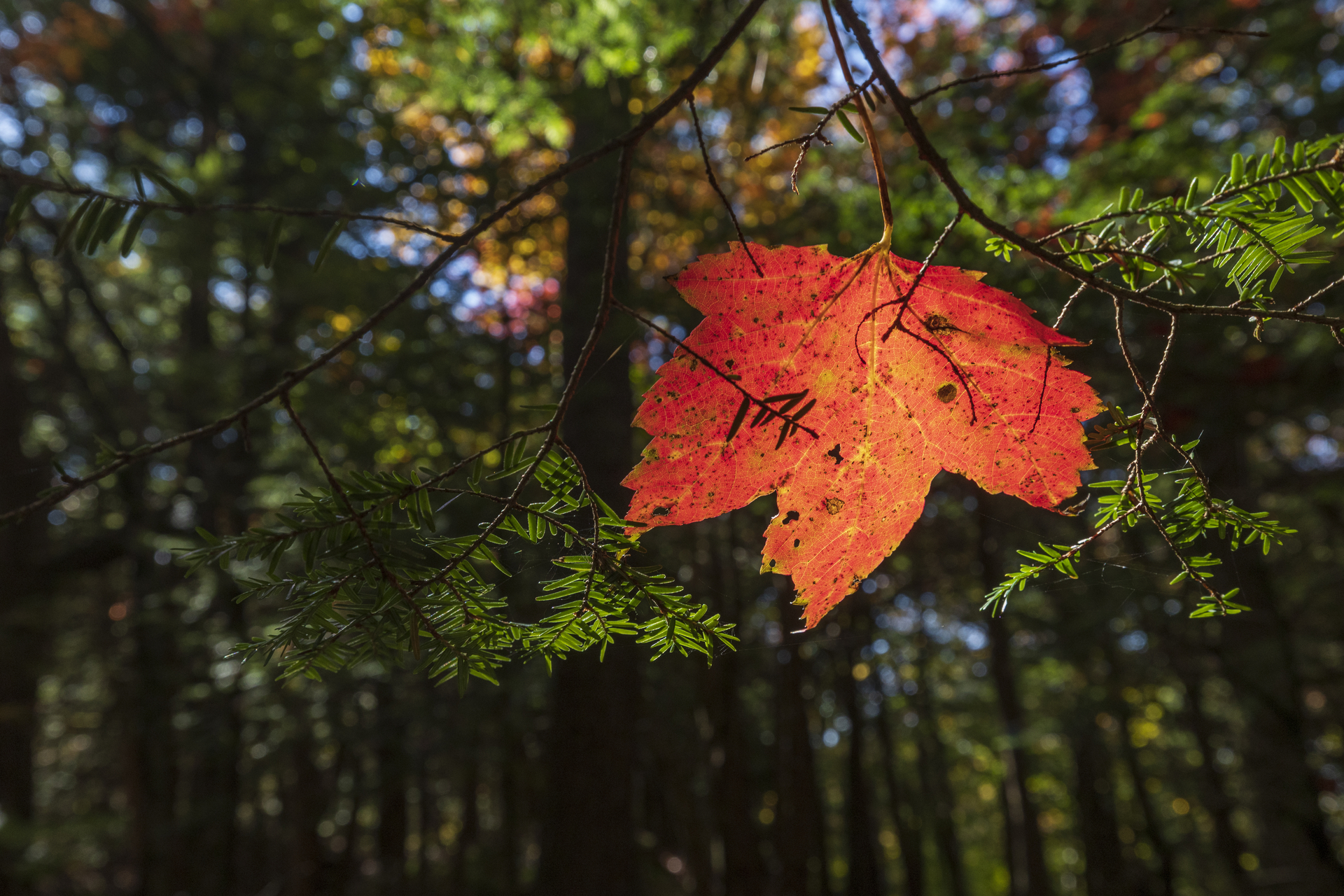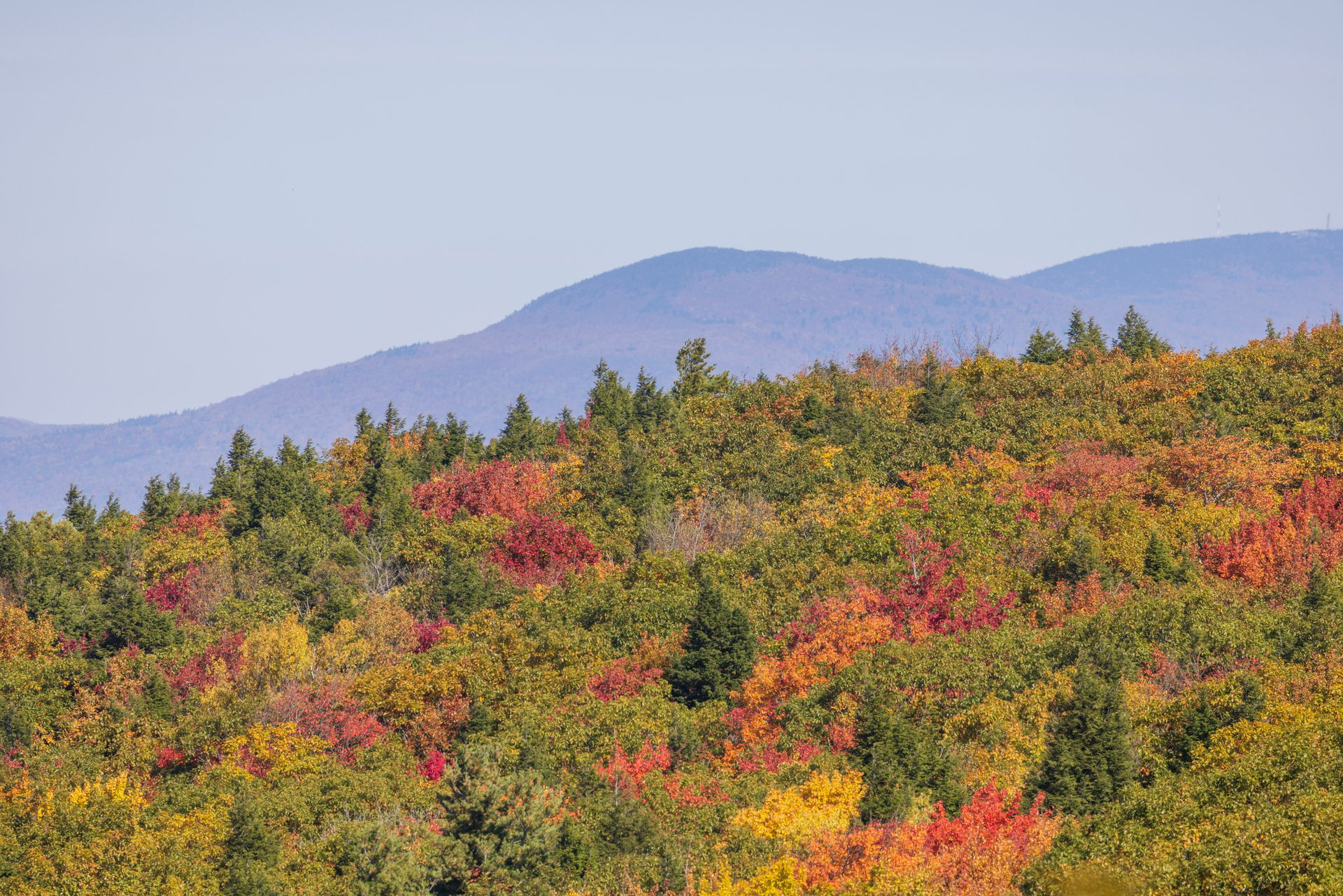Have you ever noticed that the progression of fall foliage follows a natural schedule? Certain plants become colorful early in the season, and others take their time. Here’s a quick viewer’s guide to autumn color changes.
Some Trees Showcase Foliage Early
Early foliage changes can happen as early as mid-to-late September. The red maple is one of the first trees to become vibrant, especially if it’s stressed by illness or harsh conditions. Some commercially available red maple cultivars turn red especially early—look for bursts of crimson in urban spaces such as parking lots.
The white ash is also quick to show its purple color. Down on the forest floor or twining up tree trunks, Virginia creeper often becomes vibrantly red while its surroundings are still green. Poison ivy also quickly picks up rainbow of colors.
Other Trees Change Color Later
Oaks and aspens tend to change a little later in the season (mid-to-late October). The American larch, which you may see in boggy areas, also takes its time to turn bright yellow. Later, it’ll drop all of its needles; it’s the only conifer in our region to do so.
Once most of the leaves have fallen and the woods look more open, you’ll spot radiant hickories, their brilliant yellow-gold foliage practically glowing in the woods. The American beech also turns golden brown later. Rather than falling, many beech leaves dry up and cling to the branches all winter, and you’ll hear them rustling in the wind.
Everything Depends on the Weather
The timing of leaf color change depends on several factors, including the health of a plant and its growing location. One of the most important variables of all is the weather. Low temperatures, rain, wind, and snow can cause leaves to drop quickly before they have a chance to reach their full color.
When conditions are ideal, though, there’s nothing like watching the progression of fall foliage in New England forests.
Find a Place for Fall Foliage
Go leaf peeping with us this fall! Find a wildlife sanctuary near you to witness the different leaf shades that appear as autumn unfolds.
Upcoming Programs
See MoreAfterschool Adventures: Winter Migration
-
Habitat Education Center and Wildlife Sanctuary, Belmont
-
Wednesday, January 14
3:30-5:00pm
Age 5 - 9
Pottery in Motion: Nature-Inspired Wheel Throwing Workshop
-
Museum of American Bird Art Education Center, Canton
-
6 classes starting
Wednesday, February 25
6:30-8:30pm
Adults
Mission Possible
-
Drumlin Farm Wildlife Sanctuary, Lincoln
-
Saturday, March 7
7:00am-5:00pm
Adults
Pottery in Motion: Nature-Inspired Wheel Throwing Workshop
-
Museum of American Bird Art Education Center, Canton
-
6 classes starting
Wednesday, April 8
6:30-8:30pm
Adults
Nature's Impressions: Printmaking with Native Plants
-
Museum of American Bird Art Education Center, Canton
-
Saturday, May 9
11:30am-1:30pm
Adults
Pottery in Motion: Nature-Inspired Wheel Throwing Workshop
-
Museum of American Bird Art Education Center, Canton
-
6 classes starting
Wednesday, May 20
6:30-8:30pm
Adults
Stay Connected
Don't miss a beat on all the ways you can get outdoors, celebrate nature, and get involved.




